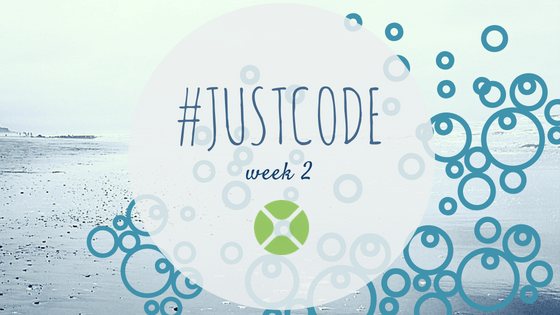Using Xojo Web to create complete web apps and solutions means not having to learn a bunch of interpreted languages and dozens of ever-changing frameworks. I’m looking at you: HTML, CSS (is that even a language?), JavaScript, PHP, et al. Of course, Xojo Web not only makes it possible to create your own web apps, but it also acts as the perfect middleware that your desktop and iOS apps can communicate with. Learn about APIs and web services with Xojo in the tutorial blog post.
Comments closedCategory: Technology
In week 2 of the Just Code challenge I took inspiration from a feature in 1Password that can generate a password suggestion. This desktop app allows you to specify a desired password length and the number of digits and symbols to include in it.
Comments closedIn an ideal world there is a person responsible for every step in software development, from coding, UI design, distribution, documentation, marketing and support. All of this can seem really overwhelming for independent developers and small businesses. But if you break it down and take it one piece at a time, it’s manageable by even the smallest team of one. Right now, let’s look at software distribution.
For software, distribution usually means generating and validating unique serial numbers for each of your products and users. Serial numbers (or license keys) help you manage your users, unlock a free trial or demo version for full use and, of course, minimize illegal use of your apps.
Comments closedXojo is an Object Oriented Programming Language and, among other things, that means that it supports Methods Overloading. We have seen in other posts that some of these overloaded methods can be Class Constructors, but, there are others things you can do. For example, we can overload the operators. These are the methods in charge of adding two instances of the same class, subtracting, multiplying or dividing them. But we also have at our disposal another operator we can overload: Lookup. What advantages does this give us and how it does it work? Let’s explore it while building a Preferences class we can use in any of our projects.
Comments closedEarlier this week, the FCC’s repeal of Net Neutrality officially when into effect. What does this mean? It means that the rules that were put into place to prevent ISPs from abusing their power are gone. You might be wondering what power they actually have? I’ve already written about this before but in summary, most people only have a single option for internet service. That means that for them, there is no competition. Their ISP has them by the proverbial short hairs and there’s no other place most of us can go for Internet access. Net Neutrality at least prevented those ISPs from really abusing their monopoly. That’s now gone.
As the Electronic Frontier Foundation said, you’re not going to see your Internet service suddenly slow to a crawl or block specific sites. It will be more of a steady decline. It’s like having terminal cancer. It won’t kill you tomorrow but it will eventually.
Comments closedAfter seeing this conversation on the forums, I thought it would be helpful to run through why you can move some of your app’s DLLs but you cannot move others.
On Windows, the Visual Studio C Runtime DLLs can be in one of two locations on systems that do not already have them installed. All versions of Windows prior to Windows 10 would need these installed.
Comments closedThese days everyone has a great idea for an app. Maybe you have an idea that would save you time at work, or maybe you’ve been thinking of an app that would automate something you do at home. Not sure where to start? One of your first steps is choosing a development tool that is right for you and for your project.
Here are five questions to guide your decision:
Comments closedSome of the most interesting web services you can use with Xojo through remote API calls are related to Artificial Intelligence. There are many different APIs provided by the main players in the AI sector, but IBM’s Watson is by far the most well known.
I’m going to show you how to connect to IBM’s Watson services with REST APIs and how to use them with Xojo projects to identify images. This is just one example, of course, of the many ways to utilize Watson and AI in your Xojo apps.
Comments closedIf you spend enough time trying to predict the future, you learn that the more variables there are, the more difficult it becomes to determine a future. Take the weather for example. It’s not hard to predict tomorrow’s weather because there’s not much that will change over the next 12 hours or so. Try to predict the weather 7 days from now, 7 months or worse, 7 years from now, and your results will begin to vary dramatically.
This is certainly the case when it comes to writing apps. The bigger any one particular feature is, the more variables there are that affect it and thus the more difficult it becomes to predict how long it will take to finish. You don’t have to work in the software business very long to figure this out. Like most people in the software industry, we’ve been trying (with varying degrees of accuracy) to do this not just for our own internal planning but because we know you want, and need, to know as well.
Comments closedDuring his Keynote, Geoff announced the winners of the 2018 Xojo Design Awards, honoring excellence in software design in the following categories: Best Developer Tool, Best Specialty App, Best Consumer App, Best Mobile App, Best Utility App and Best Cross-Platform App.
These apps represent the creativity, flexibility and diversity in the Xojo Community – support this year’s winners and the whole Xojo community by sharing and reviewing their apps on social media and app stores!
This year’s winners are:
Comments closed




